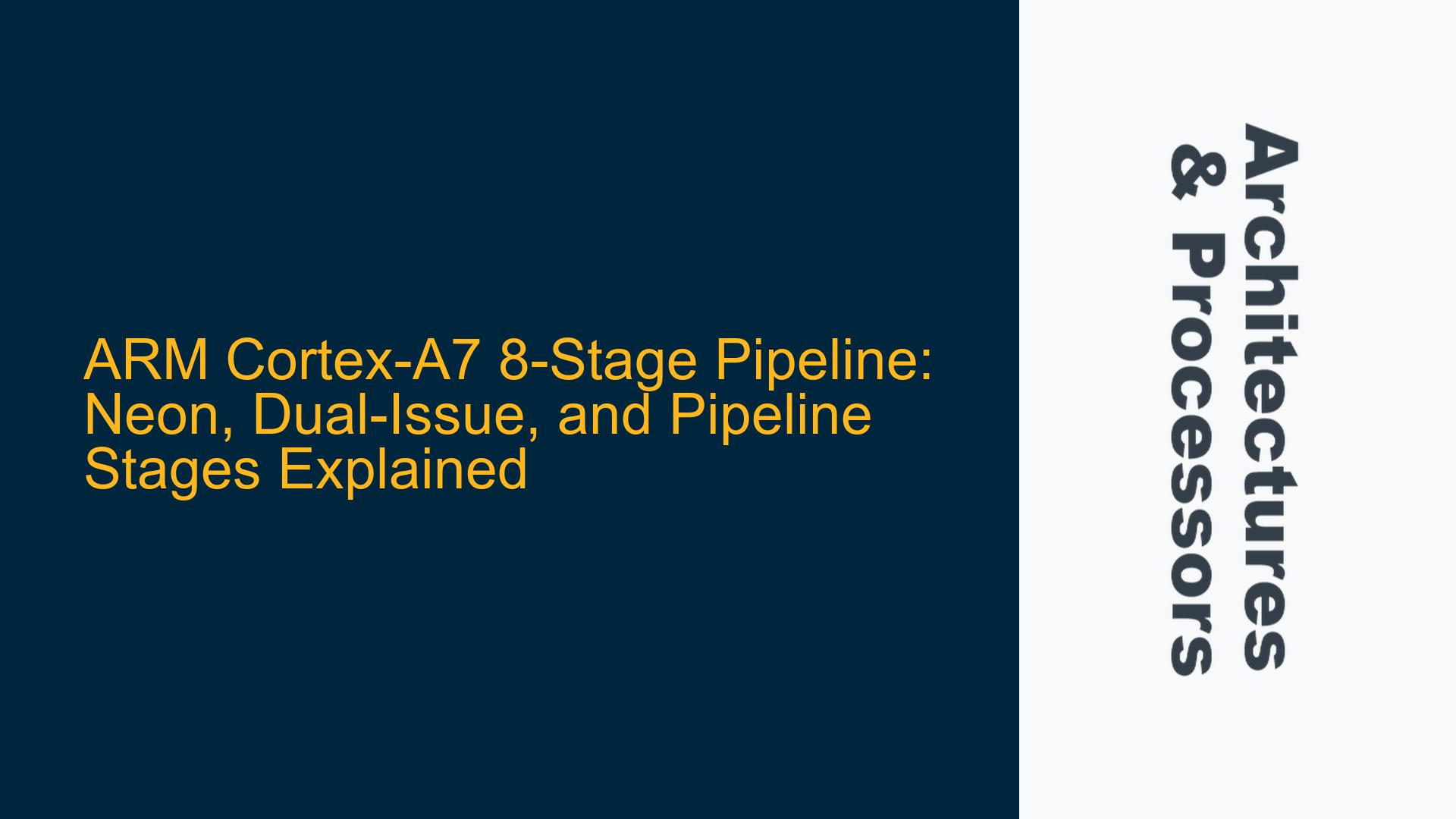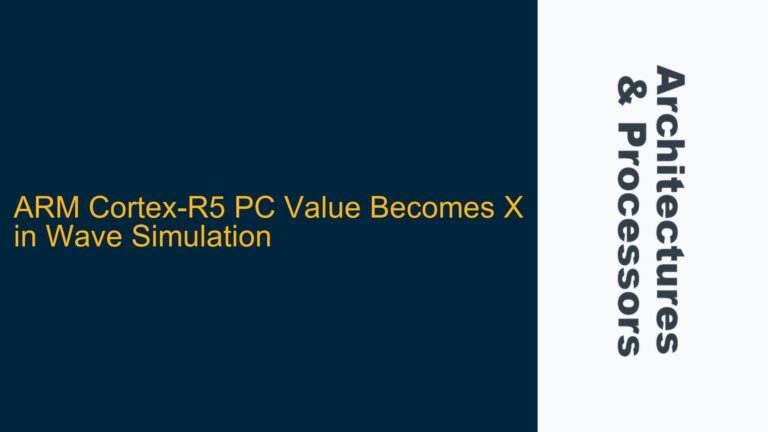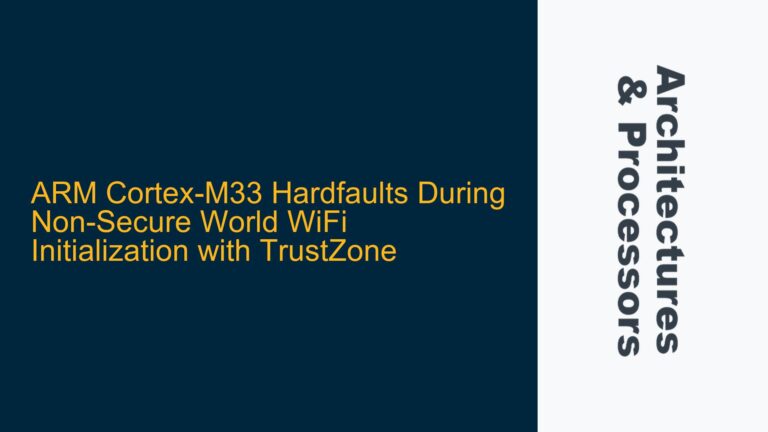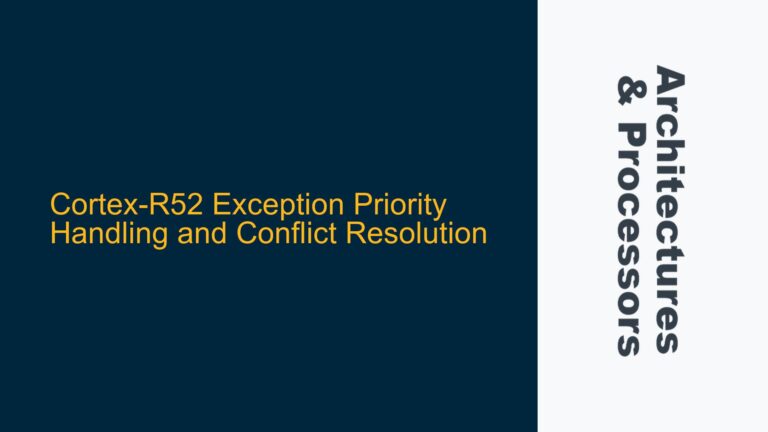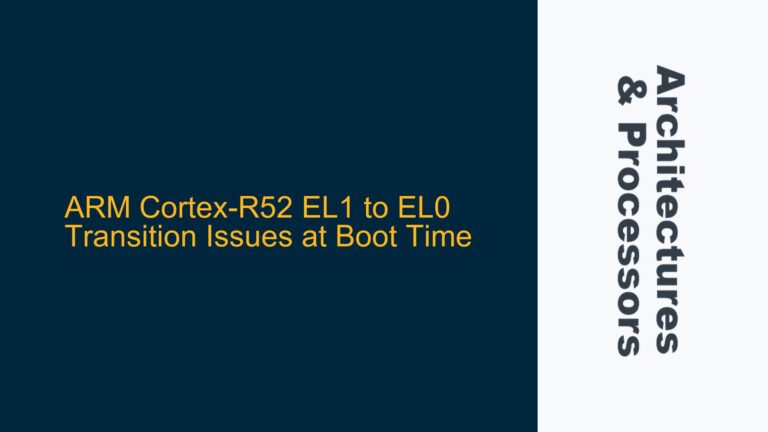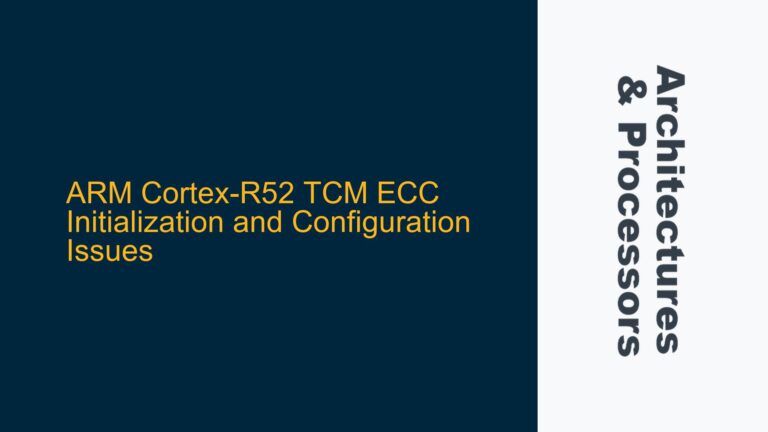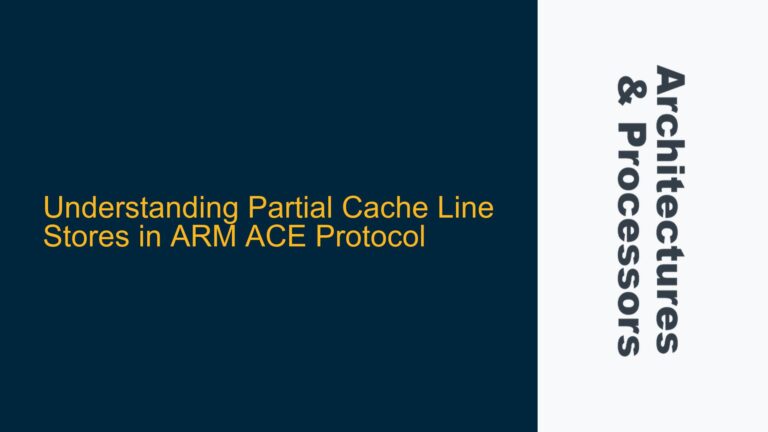ARM Cortex-A7 8-Stage Pipeline Architecture and Neon Integration
The ARM Cortex-A7 processor is a highly efficient, low-power processor core designed for embedded and mobile applications. It features an 8-stage pipeline that balances performance and power efficiency, making it suitable for a wide range of devices. The pipeline stages are designed to maximize instruction throughput while minimizing latency and power consumption. Each stage in the pipeline has a specific role in the instruction execution process, and understanding these stages is crucial for optimizing software and diagnosing performance bottlenecks.
The 8-stage pipeline of the ARM Cortex-A7 consists of the following stages: Fetch, Decode, Issue, Execute, Memory Access, Writeback, and two additional stages for branch prediction and Neon processing. The Fetch stage retrieves instructions from memory, while the Decode stage interprets these instructions and prepares them for execution. The Issue stage determines which instructions can be executed in parallel, leveraging the dual-issue capability of the Cortex-A7. The Execute stage performs the actual computation, and the Memory Access stage handles data transfers between the processor and memory. The Writeback stage updates the register file with the results of the executed instructions.
The Neon pipeline, which is integrated into the Cortex-A7, is a SIMD (Single Instruction, Multiple Data) engine designed to accelerate multimedia and signal processing workloads. The Neon pipeline operates in parallel with the main pipeline and has its own set of stages, including Fetch, Decode, Execute, and Writeback. The Neon pipeline can process multiple data elements simultaneously, making it highly efficient for tasks such as image processing, audio encoding, and vector mathematics.
The dual-issue capability of the Cortex-A7 allows the processor to issue two instructions per clock cycle under certain conditions. This feature is particularly useful for improving performance in workloads with high instruction-level parallelism. However, dual-issue is not always possible, as it depends on the availability of execution units and the absence of data dependencies between instructions.
Neon Pipeline Stages and Dual-Issue Constraints in ARM Cortex-A7
The Neon pipeline in the ARM Cortex-A7 is designed to handle SIMD operations efficiently. It consists of four main stages: Fetch, Decode, Execute, and Writeback. The Fetch stage retrieves Neon instructions from the instruction cache, while the Decode stage decodes these instructions and prepares them for execution. The Execute stage performs the SIMD operations, and the Writeback stage writes the results back to the register file.
The Neon pipeline operates independently of the main pipeline but shares some resources, such as the instruction cache and the register file. This independence allows the Neon pipeline to execute SIMD instructions concurrently with scalar instructions, improving overall performance. However, the integration of the Neon pipeline with the main pipeline introduces certain constraints, particularly when it comes to dual-issue.
Dual-issue in the ARM Cortex-A7 is constrained by several factors, including the availability of execution units, data dependencies, and resource conflicts. For dual-issue to occur, the processor must be able to identify two instructions that can be executed in parallel without conflicting for resources. This requires careful scheduling of instructions and a deep understanding of the pipeline architecture.
One of the key constraints on dual-issue is the availability of execution units. The Cortex-A7 has a limited number of execution units, and not all instructions can be executed in parallel. For example, a Neon instruction and a scalar instruction may compete for the same execution unit, preventing dual-issue. Additionally, data dependencies between instructions can prevent dual-issue, as the processor must wait for the results of one instruction before executing the next.
Resource conflicts can also limit dual-issue. For example, if two instructions require access to the same register file port, they cannot be issued simultaneously. Similarly, if two instructions require access to the same memory bank, they may conflict and prevent dual-issue. These constraints highlight the importance of careful instruction scheduling and optimization to maximize the benefits of dual-issue in the Cortex-A7.
Optimizing Instruction Scheduling and Pipeline Utilization in ARM Cortex-A7
Optimizing instruction scheduling and pipeline utilization in the ARM Cortex-A7 requires a deep understanding of the pipeline architecture and the constraints imposed by dual-issue and Neon processing. One of the key techniques for optimizing pipeline utilization is instruction reordering, which involves rearranging instructions to minimize data dependencies and resource conflicts. This can be achieved through static scheduling at compile time or dynamic scheduling at runtime.
Static scheduling involves reordering instructions during the compilation process to maximize parallelism and minimize stalls. This requires the compiler to have detailed knowledge of the pipeline architecture and the constraints imposed by dual-issue and Neon processing. The compiler can use this knowledge to schedule instructions in a way that maximizes throughput and minimizes latency.
Dynamic scheduling, on the other hand, involves reordering instructions at runtime based on the actual execution conditions. This can be achieved using techniques such as out-of-order execution and speculative execution. Out-of-order execution allows the processor to execute instructions in a different order than they appear in the program, while speculative execution allows the processor to execute instructions before it is certain that they will be needed. These techniques can improve pipeline utilization by allowing the processor to exploit parallelism that is not apparent at compile time.
Another important technique for optimizing pipeline utilization is loop unrolling, which involves duplicating the body of a loop to reduce the overhead of loop control instructions. This can improve performance by increasing the amount of parallelism available to the processor and reducing the number of stalls caused by branch instructions. However, loop unrolling can also increase code size, which may be a concern in memory-constrained environments.
In addition to instruction scheduling, optimizing pipeline utilization in the ARM Cortex-A7 also requires careful management of the Neon pipeline. This includes ensuring that Neon instructions are scheduled in a way that maximizes parallelism and minimizes stalls. One technique for achieving this is vectorization, which involves converting scalar operations into vector operations that can be executed by the Neon pipeline. This can significantly improve performance for workloads that involve large amounts of data parallelism.
Finally, optimizing pipeline utilization in the ARM Cortex-A7 also requires careful management of the memory hierarchy. This includes ensuring that data is aligned and prefetched in a way that minimizes cache misses and maximizes memory bandwidth. Techniques such as data alignment, prefetching, and cache blocking can be used to achieve this. Data alignment involves ensuring that data is stored in memory in a way that minimizes the number of cache lines required to access it, while prefetching involves loading data into the cache before it is needed. Cache blocking involves dividing data into blocks that fit into the cache, reducing the number of cache misses and improving performance.
In conclusion, optimizing instruction scheduling and pipeline utilization in the ARM Cortex-A7 requires a deep understanding of the pipeline architecture and the constraints imposed by dual-issue and Neon processing. Techniques such as instruction reordering, loop unrolling, vectorization, and memory hierarchy management can be used to maximize performance and minimize power consumption. By carefully managing these factors, developers can achieve significant performance improvements in their applications.
